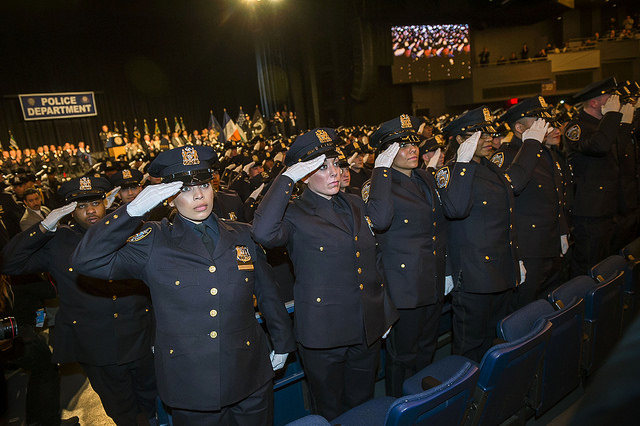
(photo: Ed Reed/Mayoral Photography Office)
Social media was full of despair as advocates bemoaned the failure of New York state government to approve bail reform legislation in the recently-passed budget. The push to eliminate cash bail brought together dozens of organizations and hundreds of concerned citizens to advance an important reform. This kind of mobilization is not atypical – advocacy campaigns tend to focus on passing legislation or electing officials.
Eliminating cash bail is a good idea, and over time, our bet is that it will end up succeeding in Albany. But we know from the Independent Commission on New York City Criminal Justice and Incarceration Reform chaired by former Chief Judge Jonathan Lippman that you don’t need to pass new legislation in order to transform the justice system. Indeed, the commission made the case that it is possible to reimagine criminal justice in New York City – including closing Rikers Island – without any new legislation whatsoever. In fact, this process is already underway.
The Mayor’s Office of Criminal Justice has just announced that the city's jail population is now less than 8,500 – down from a high of over 20,000 in the 1990s. This did not happen overnight. It also did not happen thanks to the passage of any single piece of legislation or the election of any single official.
Reducing incarceration in New York City took place over the course of multiple decades and mayoral administrations. It was a slow, incremental process, involving dozens, if not hundreds of decisions by different agencies and actors, the vast majority of which never made newspaper headlines. For example, in 1997, New York City’s criminal court judges released roughly 50 percent of defendants on their own recognizance pending trial, without setting bail. Today, this figure is closer to 70 percent. The implications of this shift in practice are enormous – it adds up to tens of thousands of defendants being given the chance to avoid the harms and abuses of Rikers Island.
Based on our work in New York and our recent examination of successful reform efforts across the country in Start Here, we argue for an approach to criminal justice reform that focuses on practice not politics. We believe that we need to transform the culture of our justice system – and that the best way to achieve this is by working directly with the police officers, prosecutors, judges, and correctional officials who staff our precincts, jails, and courts to help them change the way they do their jobs on a daily basis.
Many criminal justice reformers go over the heads of practitioners and speak directly to elected officials. Legislating change is an enormously tempting path to pursue. A successful bill in Albany or Washington can alter the course of government more or less overnight. At least that's the promise. In reality, things often don't pan out that way.
As Michael Lipsky pointed out more than a generation ago in Street-Level Bureaucracy, frontline staffers can sabotage or undermine any initiative that they do not believe in. That's why real criminal justice reform requires time – time to change the hearts and minds of the people who run the criminal justice system.
Let’s be real: it can be profoundly frustrating to take an incrementalist approach to reform. While there is much to celebrate in New York City, which now has the lowest rate of incarceration of any major American city to go along with dramatically reduced levels of crime, there is also much work still to be done. A trip to criminal court reveals that racial disparities are still very much with us. A visit to Rikers Island indicates that we have a long way to go before we can say that our system treats defendants with decency and dignity.
Here are three changes in practice that would go a long way toward making our justice system more fair and more effective.
First, police officers and prosecutors need to create off-ramps so that more low-level cases can be diverted out of the system entirely. Second, judges and court administrators need to do everything in their power to expedite case processing and avoid unnecessary delays – especially when defendants are being held in jail pretrial. And finally, elected officials need to make deeper investments in pretrial services and alternative sentencing programs so that judges have options beyond jail and nothing.
None of these fixes requires new laws to be passed -- just the active engagement of the people who run the justice system in New York City. The good news is that policymakers are aggressively pursuing all of the above.
New York City is a case study for the kind of justice reform that takes a long time to see to fruition – but it’s the kind of reform that is both durable and sustainable. The process is gradual; the results are nothing short of radical.
***
Greg Berman is the director of the Center for Court Innovation and co-author of Start Here: A Road Map to Reducing Incarceration (The New Press). Julian Adler is the director of policy and research at the Center for Court Innovation and co-author of Start Here.
***
Have an op-ed idea or submission for Gotham Gazette? Email This email address is being protected from spambots. You need JavaScript enabled to view it.




